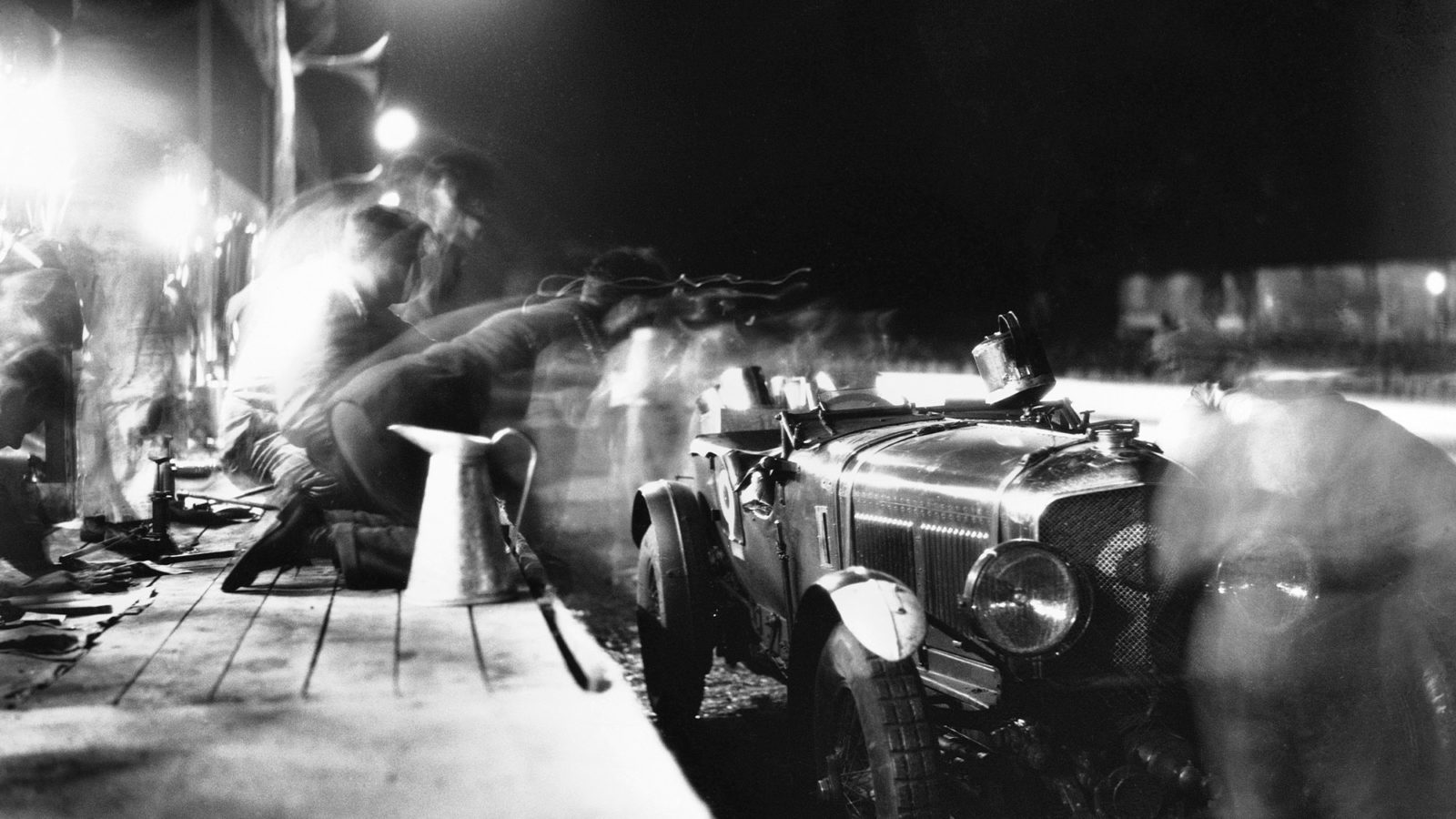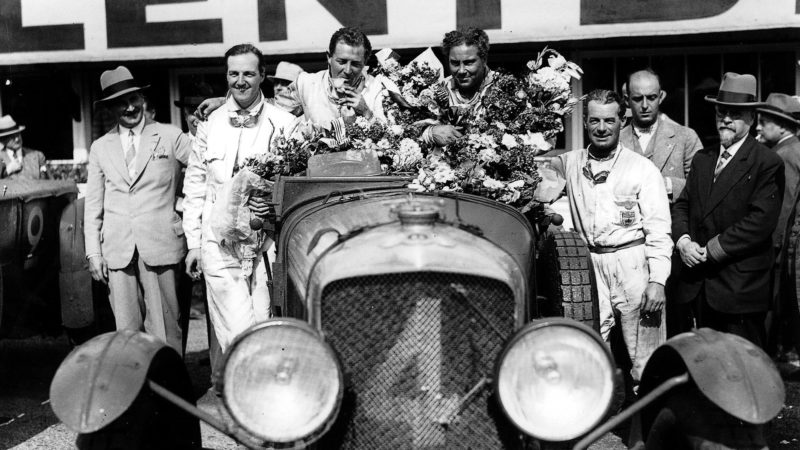Racing in the Dark book review: WO Bentley's Le Mans triumph
A fresh look at the early years of Bentley reveals how the British marque put the roar into the ’20s, says Gordon Cruickshank

Frenzied night-time action surrounds the Speed Six of Clement and Watney, placed second in 1930
Cover soundbites from Alexei Sayle and Robbie Coltrane tell you this has wider targets than the motoring field, but then as with his previous book High Performance Grimsdale brings wider views to our little world. It means that while his story – Bentley’s Le Mans racing pre-war – is something that we’ve covered at length in these pages at the time and ever since, let alone the scores of books on the subject, we can expect some different viewpoints to go with the intended different readership. A look at the bibliography confirms this: not just scads of Bentley and racing titles but others on economics, politics and social history.
It would have been astonishing had Grimsdale discovered any rich new sources so far on and he doesn’t claim to (except that he does tap unpublished memoirs of ‘Benjy’ Benjafield thanks to the racing doctor’s grandson). What he does so well is to assimilate a huge body of events and views into an elegantly packaged story, stitching the racing into a tapestry of the times and the lives of the people involved. It’s also a very human tale drawing on a large number of personal memoirs, whether it’s a passing mention of Jean Chassagne’s background or an explanation of how closely WO Bentley’s story ties up with Sammy Davis, later to be the hero of that great victory wrenched from defeat (Grimsdale says “not so much from its jaws as somewhere deep down in its digestive system”), the 1927 White House crash which piled all three Bentleys into five other cars.
I liked his comment about Bentley’s financial saviour and triumphant Le Mans hat-tricker: “Barnato was the closest 1920s Britain came to a real life Jay Gatsby.” Although I don’t think Gatsby ever kept wicket for Surrey or built his own full-size pub in the basement of his country house as ‘Babe’ did.
Even if you’ve read a lot about the Bentley story, the book’s early chapters are a valuable reminder of how WO gained the experience and the confidence needed to plunge into building what he wanted – the finest touring car on the road, “docile yet virile”. Even though his mechanical aptitude was clear from childhood, it was in the end the toss of a coin that sent him into a car dealership where he began to improve and race the DFP cars that boosted his blood octane and led to so much. I learned a lot about his wartime endeavours on the Western Front with aero engines and you can see how those lessons gave him a head start in building the cars that would proudly bear the Union Jack around the French classic and so many other tracks.

1930 winners Barnato and Kidston, flanked by Clement and Watney
Getty Images
It was news to me that his associates in the fledgeling company considered buying RAF Tangmere as a base, ironically close to where Rolls-Royces, then their main rivals, are built today. Instead they ended up at Cricklewood and began to build their masterworks – at yet another of those worst possible times, as Grimsdale explains. Rolls, Napier and Wolseley were struggling or failing and even Austin called in the receivers before being bailed out. Profit was hard to harvest at either end of the scale and WO was determined to create the best, leading to an enterprise which gulped down money and returned little for its backers. Except of course superb machinery and flag-waving victories before the name was swallowed and diluted by Rolls-Royce in the 1930s.
You might not think the subject of death duties would turn up, yet Grimsdale points out that 40% slices off every big estate was “a seismic shock to the landed gentry” so that Bentley’s one-time customers were replaced by the new brash set to whom scandal was spice to their lavish lives, provoking outrage among people “a fair few of whom had their share of blonde breakfast companions in their Mayfair flats but would never have received a guest at the same time”. That nicely sets the scene for the Bentley Boys and their racy lives. And women too: Birkin backer Dorothy Paget “stepped fully formed from the pages of an Evelyn Waugh novel” while Mrs Bruce gets her glory for the 24-hour record she set in a works 4½. “My God, what a good driver that woman was,” said one of the crew.
“Dorothy Paget might have stepped fully formed from the pages of an Evelyn Waugh novel”
Racing in the Dark presents a very clear outline of that Rolls-Royce takeover and the unpleasantness that surrounded WO’s fiveyear handcuffs and prevented him seeing his own name at the chequered flag of any further racing. The shock and bitterness felt by him, his loyal employees and the Bentley Boys is well conveyed; so is the cul-de-sac he was forced down, as well as the knife-edge timing of Lagonda’s 1935 Le Mans victory which provided his escape road just when Rolls-Royce’s hardest negotiator was trying to bind him for a further term – “like a hostage” as WO described it.
It’s a shame that the photos are small and predictable in their central wedge, but as Grimsdale tells them it’s the stories that are colourful, weaving first-hand memories together with his easy writing style so the tales of the racing are grounded by what was going on around at the track and back home. You can’t help feeling that this £20 volume would save the new reader buying a lot of other books on Bentley’s racing.
 Racing in the Dark
Racing in the Dark
Peter Grimsdale
Simon & Schuster, £20
ISBN 9781471198267
 Racing in the Dark
Racing in the Dark